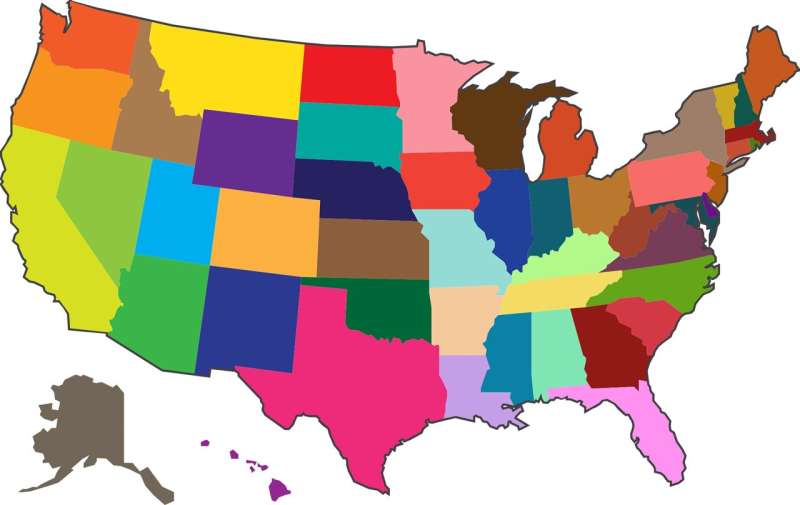New research develops a model that optimizes political fairness for political redistricting

Political redistricting is a problem of national interest with consequences to electoral representation. It is a decennial process of redrawing the boundaries of congressional and state legislative districts, and can affect a wide range of stakeholders, including the voters, candidates and political parties. New research in the journal Operations Research introduces a model that can be adopted for a redistricting process that explicitly focuses on political fairness.
"We present a model for redistricting with political fairness criteria based on fundamental fairness principles such as vote-seat proportionality (efficiency gap), partisan (a)symmetry and competitiveness," says Rahul Swamy of the University of Illinois Urbana-Champaign, the lead author of the study.
"Using a case study based on congressional redistricting in Wisconsin with Census data, our model demonstrates that district plans can be produced that are not only compact but optimize fairness."
Swamy, alongside co-authors Douglas King and Sheldon Jacobson also of the University of Illinois Urbana-Champaign, say even though redistricting as an optimization problem has been well studied, existing models primarily rely on nonpolitical fairness measures, such as the compactness of districts.
This study, "Multiobjective Optimization for Politically Fair Districting: A Scalable Multilevel Approach," combines compactness and fairness using three metrics.
"The first metric, the efficiency gap, measures the difference in the 'wasted' votes for the two major parties. Minimizing the efficiency gap ensures that one party does not waste more voters than the other, thereby limiting partisan gerrymandering," says King.
"The second notion of fairness is to ensure that if voter preferences shift in the future, the rate at which the two parties gain or lose seats is symmetric between the two parties (assuming the shift is uniform across all the districts). This outcome is accomplished by minimizing the extent of asymmetry, called partisan asymmetry.
"Third, promoting competitiveness of districts is essential to tackle incumbent gerrymandering and promote greater accountability of representatives to their voters. This outcome is achieved by minimizing the margin of victory in all the districts," says Jacobson.
The framework presented in this paper generates solutions that highlight the tradeoff between compactness and each of the three political fairness measures.
"The bottom line is that algorithms can be used for the good or the bad; this work demonstrates that the right mix of mathematics and optimization can steer algorithms toward achieving a fair and transparent redistricting process," says Swamy.
More information: Rahul Swamy et al, Multiobjective Optimization for Politically Fair Districting: A Scalable Multilevel Approach, Operations Research (2022). DOI: 10.1287/opre.2022.2311




















